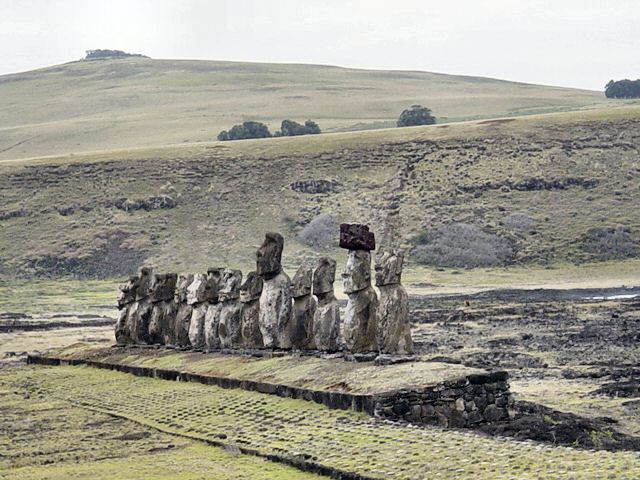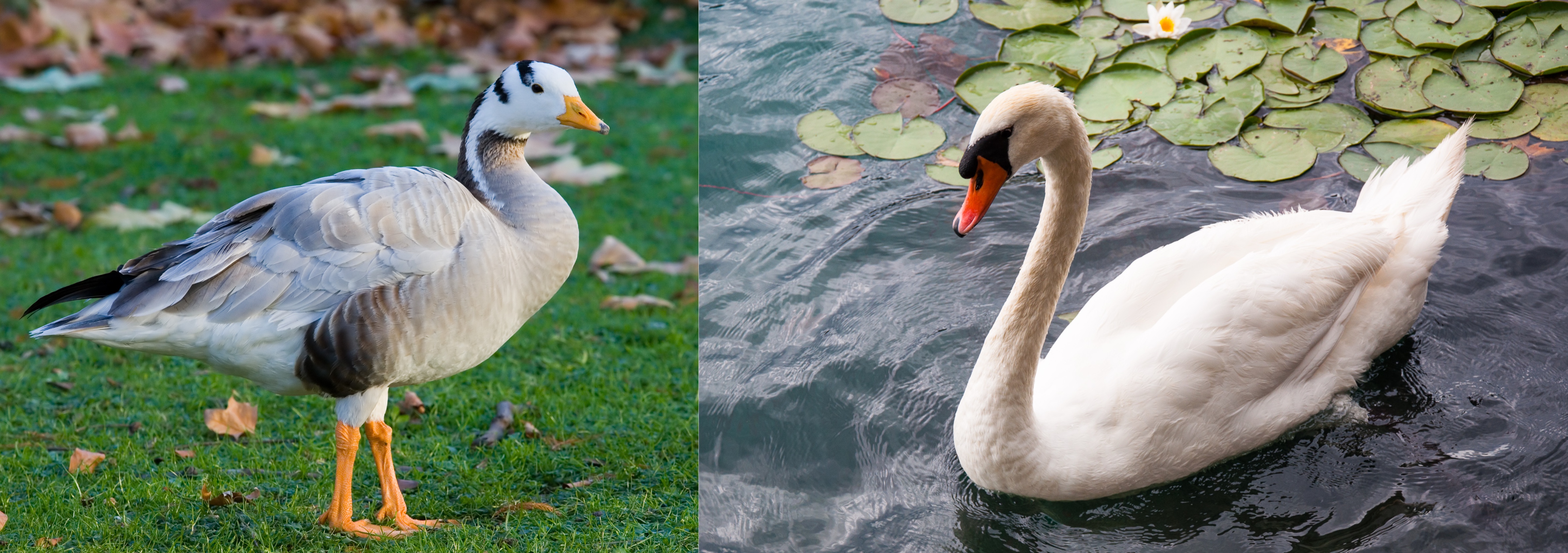|
List Of Legendary Creatures (H)
* Habrok ( Norse) – listed as the "best" hawk * Hadhayosh (Persian) – gigantic land animal * Hades (Greek) – Ruler of the Underworld * Haetae (Korean) – dog-lion hybrid * Hag (Many cultures worldwide) – wise old woman who is usually a malevolent spirit or a disguised goddess * Haietlik (Nuu-chah-nulth) – water serpent * Hai-uri (Khoikhoi) – male cannibalistic partially invisible monster * Hakutaku (Japanese) – talking beast which handed down knowledge on harmful spirits * Hākuturi (Māori) – nature guardian * Half-elf ( Norse) – human-elf hybrid * Haltija (Finnish) – spirit that protects a specific place * Hamadryad (Greek) – oak tree nymph * Hamingja ( Scandinavian) – personal protection spirit * Hamsa (Buddhist, Hindu and Jainism) – mystic bird * Hanau epe (Rapa Nui) – long-eared humanoid * Hantu Air (Malay) – shapeshifting water spirit * Hantu Demon (Philippine) – demon * Hantu Raya (Malay) – demonic servant * Harionago (Japanese) – h ... [...More Info...] [...Related Items...] OR: [Wikipedia] [Google] [Baidu] |
Haltija
A haltija (haltia) is a spirit, gnome, or elf-like creature in Finnish mythology that guards, helps, or protects something or somebody. The word is possibly derived from the Gothic ''haltijar'', which referred to the original settler of a homestead—although this is not the only possible etymology. It can also be derived from the Finnish verb ''hallita'', which means 'to rule', 'to command', 'to master'. The word is also used in modern Finnish to mean, depending on the context, holder, occupant, lord, master, owner-occupier, occupier, possessor, bearer, or owner. There are many different kinds of haltijas. There are, for example water haltijas and forest haltijas. Even graveyards have their own haltijas (''kalman väki'', "death folk"). Human settlements also have haltijas. One type is the tonttu or maan haltija (land haltija). The tonttu is the Finnish version of the Swedish tomte. The Finnish tonttu and the Swedish tomte are related to the words ''tontti'' (Finnish) and ''tomt ... [...More Info...] [...Related Items...] OR: [Wikipedia] [Google] [Baidu] |
Hantu Demon
Hantu is the Malay and Indonesian word for spirit or ghost, sometimes it is also the Tagalog word for ghost . In modern usage it generally means spirits of the dead but has also come to refer to any legendary invisible being, such as demons. In its traditional context the term also referred to animistic nature spirits or ancestral souls. The word is derived from Proto-Malayo-Polynesian ''*qanitu'' and Proto-Austronesian ''*qaNiCu''. Cognates in other Austronesian languages include the Micronesian ''aniti'', Lio language ''nitu'', Yami ''anito'', Taivoan ''alid'', Seediq and Atayal ''utux'', Bunun ''hanitu'' or ''hanidu'', Polynesian ''aitu'' or ''atua'', and Tsou ''hicu'' among the Formosan languages. In terms of concept and place in traditional folklore, it is most similar to the Filipino anito. Types Aside from generic spirits of the dead, there exist various forms of Hantu including both the benign and malevolent. * Hantu Air: spirit inhabiting the water * Hantu Beruk: ap ... [...More Info...] [...Related Items...] OR: [Wikipedia] [Google] [Baidu] |
Malays (ethnic Group)
Malays ( ms, Orang Melayu, Jawi: أورڠ ملايو) are an Austronesian ethnic group native to eastern Sumatra, the Malay Peninsula and coastal Borneo, as well as the smaller islands that lie between these locations — areas that are collectively known as the Malay world. These locations are today part of the countries of Malaysia, Indonesia (eastern and southern Sumatra, Bangka Belitung Islands, western coastal Borneo (Kalimantan) and Riau Islands), southern part of Thailand ( Pattani, Satun, Songkhla, Yala and Narathiwat), Singapore and Brunei Darussalam. There is considerable linguistic, cultural, artistic and social diversity among the many Malay subgroups, mainly due to hundreds of years of immigration and assimilation of various regional ethnicity and tribes within Maritime Southeast Asia. Historically, the Malay population is descended primarily from the earlier Malayic-speaking Austronesians and Austroasiatic tribes who founded several ancient maritime trading ... [...More Info...] [...Related Items...] OR: [Wikipedia] [Google] [Baidu] |
Hantu Air
Hantu Air, Puaka Air or Mambang Air is the Malay translation for ''Spirit of the Water'' or ''Water Ghost'', which according to animist traditions in Maritime Southeast Asia, is the unseen inhabitant of watery places such as rivers, lakes, seas, swamps and even ditches. Communication between humans and Hantu Air occur in situations based on the well-being of an environment and can be positive or negative. Water spirits are called on and communicated with through ceremonies, rituals, incantations, and in extreme cases exorcisms. Hantu Air is associated with bad things happening to people including missing persons, drowning, flooding and many other incidents. Origin The identification of incantations and rituals can be derived from the indigenous, Hindu, or Islamic origins. These origins influenced the cultural belief that everything contained a supernatural soul or essence. For a long time animism and dinamism were widely practiced in Maritime Southeast Asia. Locals would associa ... [...More Info...] [...Related Items...] OR: [Wikipedia] [Google] [Baidu] |
Rapa Nui Mythology
Rapa Nui mythology, also known as Pascuense mythology or Easter Island mythology, refers to the native myths, legends, and beliefs of the Rapa Nui people of Easter Island in the south eastern Pacific Ocean. Origin myth According to Rapa Nui mythology Hotu Matu'a was the legendary first settler and ''ariki mau'' ("supreme chief" or "king") of Easter Island. Carlos Mordo, Easter Island (Willowdale, Ontario: Firefly Books Ltd., 2002) ''Hotu Matu'a'' and his two canoe (or one double hulled canoe) colonising party were Polynesians from the now unknown land of Hiva Nuku Hiva, Hiva Oa, Fatu Hiva, Mount Oave, Marquesas Islands, Tahiti, Fenua. They landed at Anakena beach and his people spread out across the island, sub-divided it between clans claiming descent from his sons, and lived for more than a thousand years in their isolated island home at the southeastern tip of the Polynesian Triangle until the arrival of Dutch captain Jacob Roggeveen, who arrived at the island in 1722. Ancest ... [...More Info...] [...Related Items...] OR: [Wikipedia] [Google] [Baidu] |
Hanau Epe
The Hanau epe (also, hanau eepe: supposed to mean "Long-ears") were a semi-legendary people who are said to have lived in Easter Island, where they came into conflict with another people known as the Hanau momoko or "short-ears". A decisive battle occurred which led to the defeat and extermination of the Hanau epe. According to the legend, these events are supposed to have happened at some point between the 16th and 18th centuries, probably in the late 17th century. The historical facts, if any, behind this story are disputed. Since the victorious "Hanau momoko" are usually assumed to be the surviving Polynesian population, there has been much speculation about the identity of the vanished Hanau epe. Various theories have been put forward, most notably Thor Heyerdahl's claim that they were ancient migrants from Peru who were the original occupants of the island and the creators of its famous stone monuments. Heyerdahl's theories have not received much support among modern scholars ... [...More Info...] [...Related Items...] OR: [Wikipedia] [Google] [Baidu] |
Jainism
Jainism ( ), also known as Jain Dharma, is an Indian religions, Indian religion. Jainism traces its spiritual ideas and history through the succession of twenty-four tirthankaras (supreme preachers of ''Dharma''), with the first in the current time cycle being Rishabhadeva, whom the tradition holds to have lived millions of years ago, the twenty-third ''tirthankara'' Parshvanatha, whom historians date to the 9th century BCE, and the twenty-fourth ''tirthankara'' Mahāvīra, Mahavira, around 600 BCE. Jainism is considered to be an eternal ''dharma'' with the ''tirthankaras'' guiding every time cycle of the Jain cosmology, cosmology. The three main pillars of Jainism are ''Ahimsa in Jainism, ahiṃsā'' (non-violence), ''anekāntavāda'' (non-absolutism), and ''aparigraha'' (asceticism). Jain monks, after positioning themselves in the sublime state of soul consciousness, take five main vows: ''ahiṃsā'' (non-violence), ''satya'' (truth), ''Achourya, asteya'' (not stealing), ''b ... [...More Info...] [...Related Items...] OR: [Wikipedia] [Google] [Baidu] |
Hindu Mythology
Hindu mythology is the body of myths and literature attributed to, and espoused by, the adherents of the Hindu religion, found in Hindu texts such as the Vedic literature, epics like ''Mahabharata'' and ''Ramayana'', the Puranas, and regional literature like the Tamil ''Periya Puranam'' and ''Divya Prabandham'', and the '' Mangal Kavya'' of Bengal. Hindu myths are also found in widely translated popular texts such as the fables of the '' Panchatantra'' and the ''Hitopadesha'', as well as in Southeast Asian texts. Primary sources * Vedas ** Rig ** Sama ** Yajur ** Atharva * Itihasa ** Ramayana ** Mahabharata * Maha-Puranas **Agni Purana **Brahma Purana ** Brahmanda Purana **Bhagavata Purana **Devi-Bhagavata Purana **Garuda Purana **Kurma Purana **Shiva Purana **Skanda Purana **Markandeya Purana **Matsya Purana ** Narada Purana **Linga Purana **Padma Purana **Varaha Purana **Vayu Purana **Vishnu Purana *Bengali literature **Mangal-Kāvya *Tamil literature ** Divya ... [...More Info...] [...Related Items...] OR: [Wikipedia] [Google] [Baidu] |
Buddhist Mythology
The Buddhist traditions have created and maintained a vast body of mythological literature. The central myth of Buddhism is the life of the Buddha. This is told in relatively realistic terms in the earliest texts, and was soon elaborated into a complex literary mythology. The chief motif of this story, and the most distinctive feature of Buddhist myth, is the Buddha's renunciation: leaving his home and family for a spiritual quest. Alongside this central myth, the traditions contain large numbers of smaller stories, which are usually supposed to convey an ethical or Buddhist teaching. These include the popular Jātakas, folk tales or legends believed to be past lives of Gautama Buddha. Since these are regarded as episodes in the life of the Buddha, they are treated here as “myth”, rather than distinguishing between myth, legend, and folk-tale. Buddhist mythology is maintained in texts, but these have always existed alongside oral traditions of storytelling, as well as ... [...More Info...] [...Related Items...] OR: [Wikipedia] [Google] [Baidu] |
Hamsa (Hindu Mythology)
The hamsa (Sanskrit: हंस ' or ''hansa'') is an aquatic migratory bird, referred to in ancient Sanskrit texts which various scholars have interpreted as being based on the goose, the swan, or even the flamingo. Its image is used in Indian and Southeast Asian culture as a spiritual symbol and a decorative element. It is also used in a metaphorical sense with the bird attributed with the mythical ability to extract milk from a mixture of milk and water or good from evil. In Hindu iconography, ''hamsa'' is the vahana (or ''vehicle'') of Brahma, Gayatri, Saraswati, and Vishvakarma. Identification Asian language professor Monier Williams translates the term from Sanskrit as "a goose, gander, swan, flamingo (or other aquatic bird, considered as a bird of passage igratory bird...)." The word is also used for a mythical or poetical bird with knowledge. In the Rig Veda, it is the bird which is able to separate Soma from water, when mixed; in later Indian literature, the bird sep ... [...More Info...] [...Related Items...] OR: [Wikipedia] [Google] [Baidu] |
Scandinavian Mythology
Norse, Nordic, or Scandinavian mythology is the body of myths belonging to the North Germanic peoples, stemming from Old Norse religion and continuing after the Christianization of Scandinavia, and into the Nordic folklore of the modern period. The northernmost extension of Germanic mythology and stemming from Proto-Germanic folklore, Norse mythology consists of tales of various deities, beings, and heroes derived from numerous sources from both before and after the pagan period, including medieval manuscripts, archaeological representations, and folk tradition. The source texts mention numerous gods such as the thunder-god Thor, the raven-flanked god Odin, the goddess Freyja, and numerous other deities. Most of the surviving mythology centers on the plights of the gods and their interaction with several other beings, such as humanity and the jötnar, beings who may be friends, lovers, foes, or family members of the gods. The cosmos in Norse mythology consists of Nine Worl ... [...More Info...] [...Related Items...] OR: [Wikipedia] [Google] [Baidu] |




